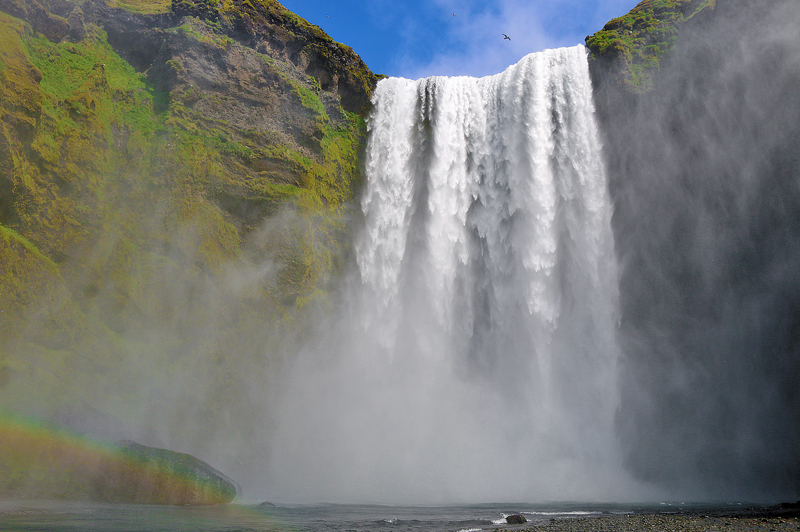Skógafoss is one of the more popular sites to see in Iceland because it is considered to be one of the biggest and most beautiful waterfalls in the country — and because it is easily accessible from the main highway, as it is only two kilometers north of Ring Road.
Skógafoss: One of the Most Beautiful Waterfalls in Iceland
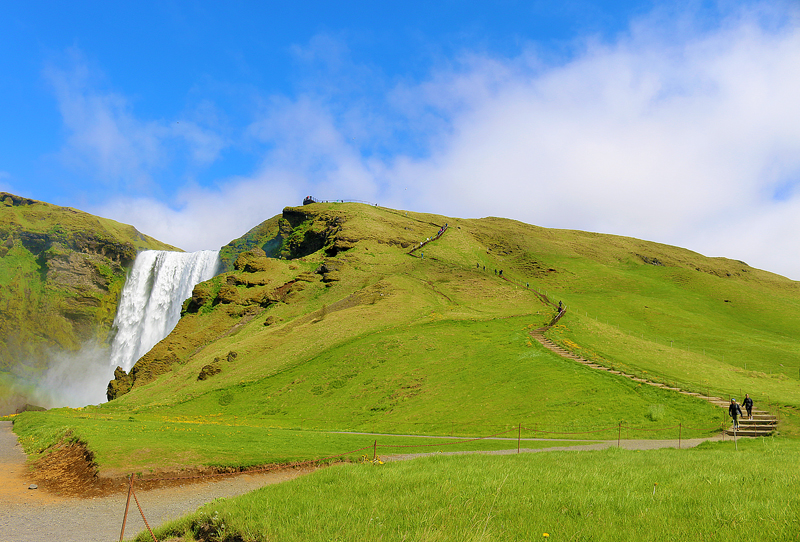
Visitors can immediately view Skógafoss from their vehicles in the parking lot…

…but you can also climb the stairs up the hill on the east side of the falls to see it from the top — as well as gain access to one of the most popular hiking and trekking trails in Iceland, which leads towards the Fimmvörðuháls pass between the Eyjafjallajökull Glacier and the Mýrdalsjökull Glacier from which the Skógá River emanates. Once you are there, you are then halfway to the Highlands oasis of Þórsmörk on the other side; and it continues as the Laugavegur trail to Landmannalaugar. Along the way — upon hiking the Skógaheiði moors — you can view a total of 22 assorted waterfalls and rapids which adorn the Skógá River.
I did not hike beyond the top of Skógafoss because hiking the entire approximately 13 miles of this trail can consume between eight hours and 12 hours each way.
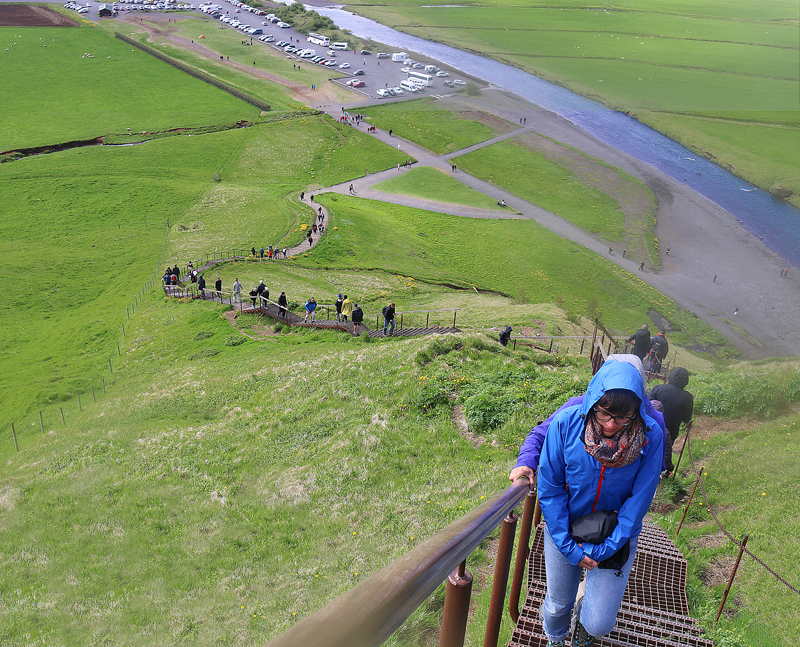
The hill is not a difficult climb — although it may be a challenge for some visitors to Skógafoss…

…but the views of Skógafoss from the top are well worth the climb…
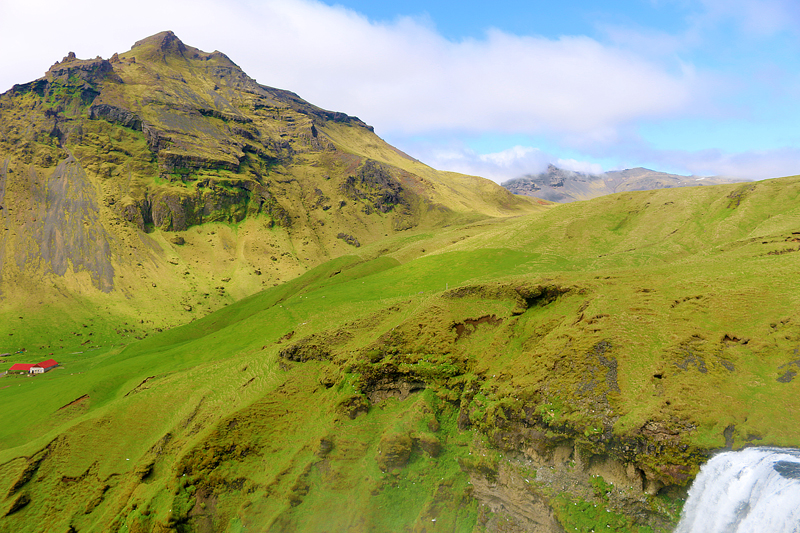
…as is the surrounding mountainous landscape of the Highlands of Iceland beyond the top of Skógafoss…
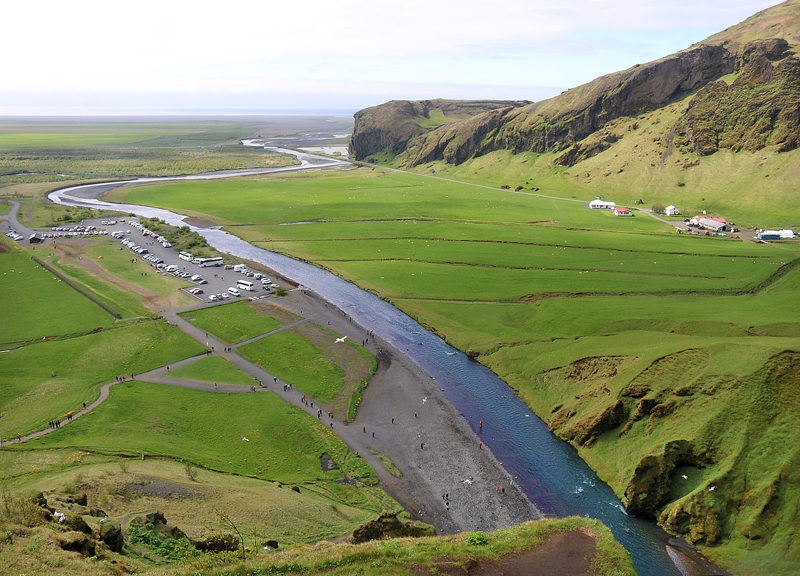
…and the view of the Skógá River — as well as the parking lot — below Skógafoss as well.

Off in the distance is the Atlantic Ocean — although at one time, the coastline of southern Iceland was once near the bottom of the hill before the waters gradually receded southward approximately five kilometers or 3.1 miles. The cliffs are ancient coastal cliffs, which were formed by marine erosion at the end of the last ice age.
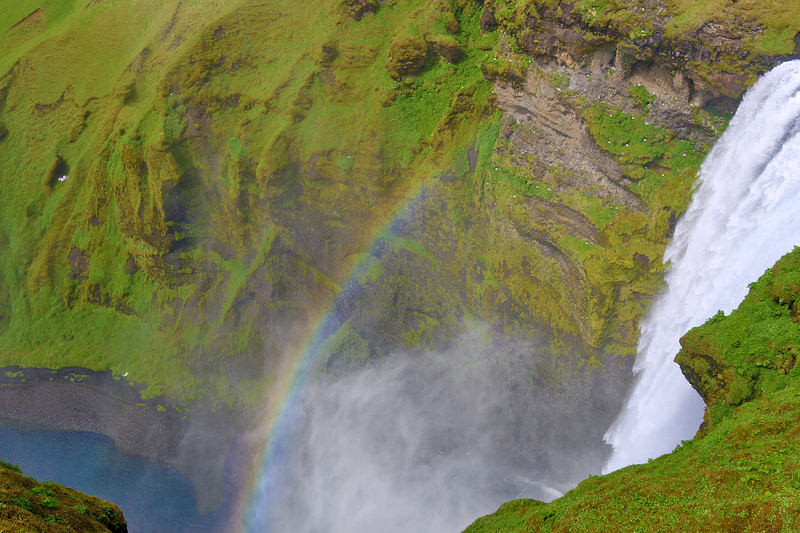
Depending on where you and the sun are located in relation to Skógafoss — preferably with the sun behind you — you can see either a single rainbow or a double rainbow.

The Skógá River flows over a layer of hard rock — until it reaches along the edge of the moor and rushes down the waterfall itself.
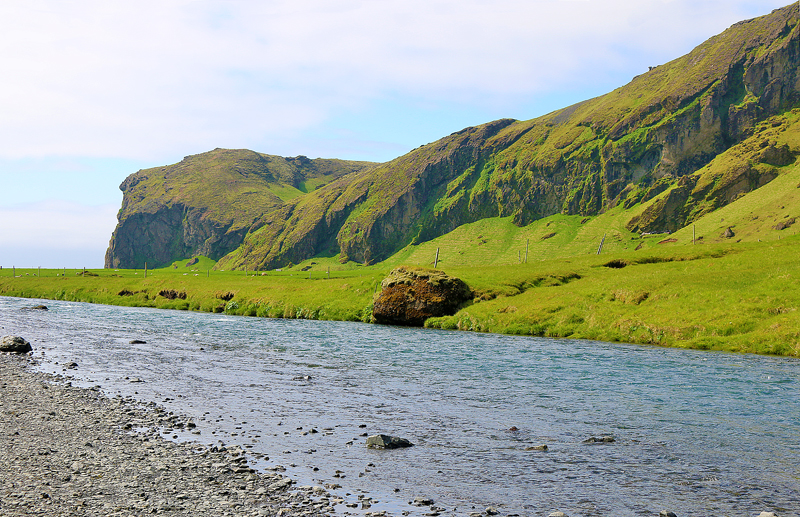
The Skógá River flows southward from Skógafoss under Highway 1 towards the Atlantic Ocean, into which it empties.
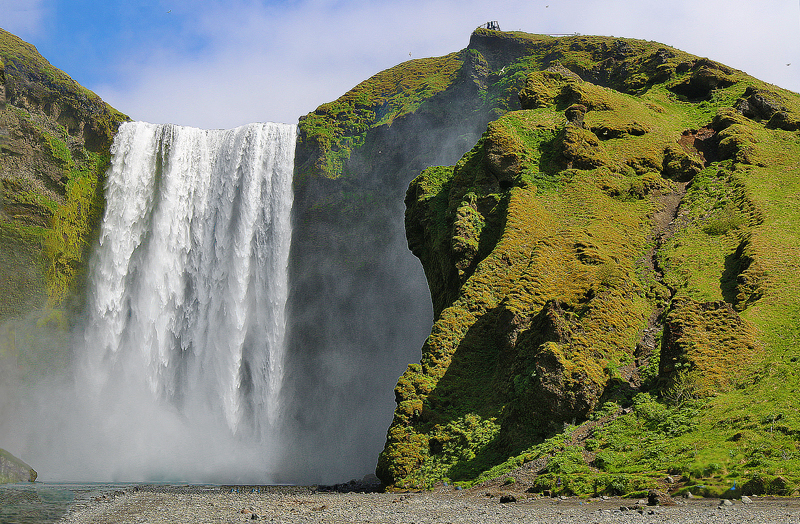
According to legend, Þrasi Þórólfsson — who was the first Viking settler in the area — buried his treasure chest of gold in a cave behind Skógafoss; and for a long time, one end of the chest was visible through the waterfall.
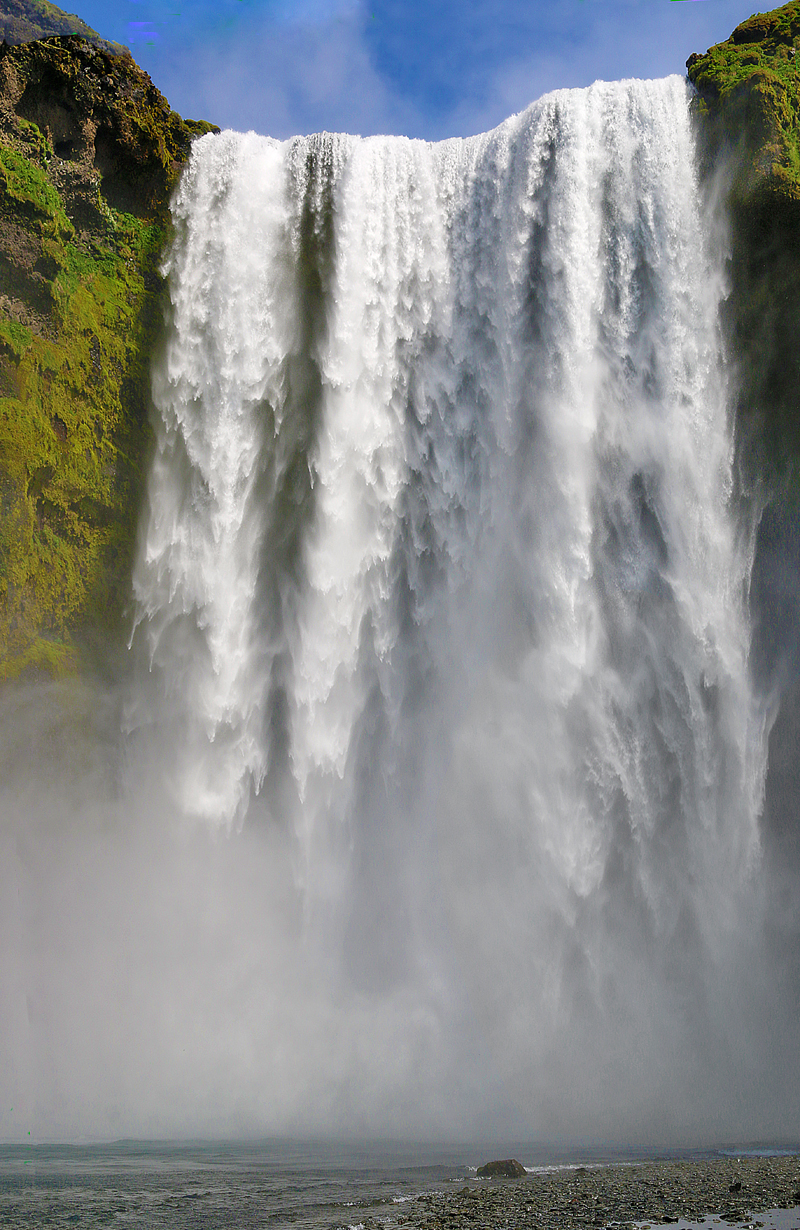
Three men from Skógar once tried to retrieve the treasure chest by placing a hook in an iron ring on the side of the chest — but it was so heavy that the iron ring came loose; and the mission was ultimately aborted.

The iron ring was allegedly given to the local church and used on its door. The iron ring is now located in the Skógar folk museum.
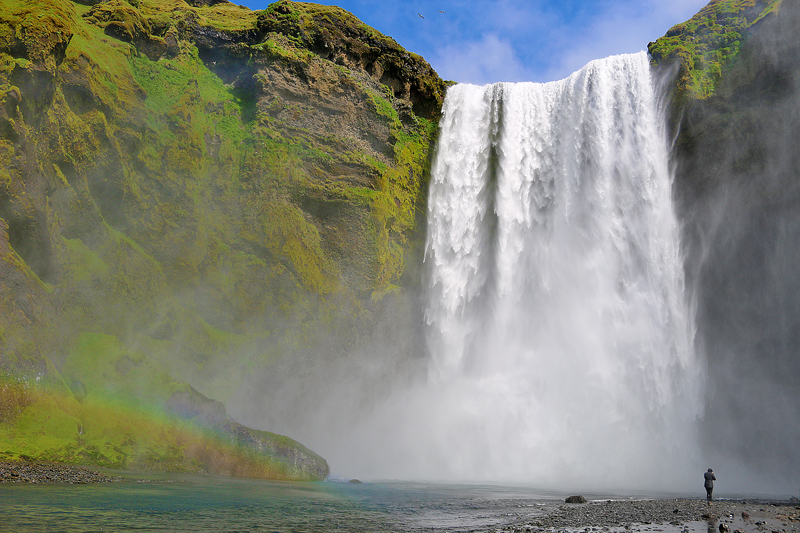
The lone man shown at the bottom of Skógafoss gives an indication of the perspective and the scale of the waterfall, which measures approximately 82 feet or 25 meters wide and 200 feet or 60 meters tall.
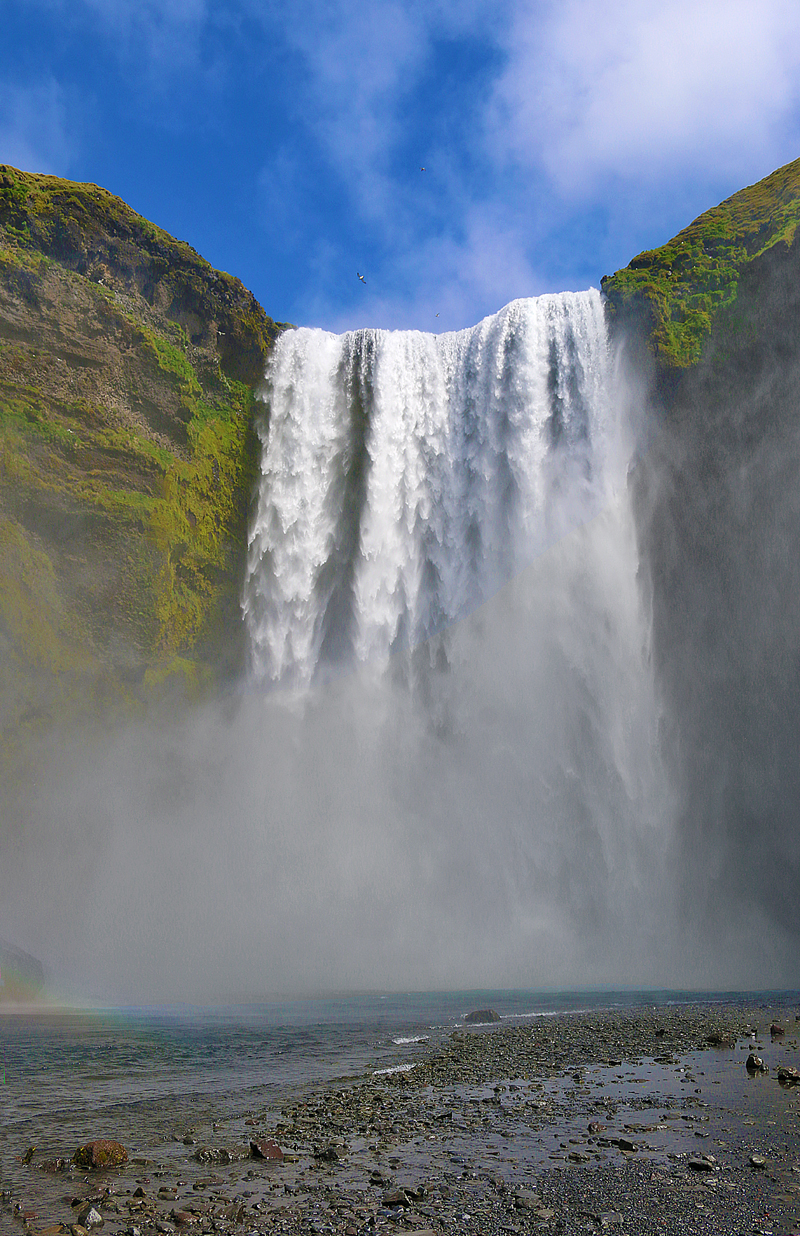
Summary
Skógafoss is located on the Skógá River off Highway 1 — which is the road that rings around Iceland — near the southernmost part of the island country approximately 156 kilometers east southeast of the city center of Reykjavík. Driving time is approximately two hours each way.
Facilities are located at the Skogar tourism information center, Skogar Museum, or at nearby lodging establishments. You can stay as long as you like, as it is technically open 24 hours per day, 365 days per year; but expect large crowds of people during the peak season of the summer months. Give yourself a minimum of 20 minutes to enjoy the natural beauty of Skógafoss — but I would recommend at least 90 minutes if you want to walk up and down the hill.
If you plan on hiking on the aforementioned trail, you may be able to do the hike in one entire day — but you will more likely need two days and stay overnight at either the Baldvinsskali Hut or the Fimmvörðuháls Hut; and reservations should be booked well in advance.
No admission charge needs to be paid to either enter the area where Skógafoss is located — nor are you required to pay to park your vehicle in the parking lot.
For more details about my experiences during my eleven days in Iceland, please read the following articles:
- Exploring the Inside of a Dormant Lava Tunnel in Iceland
- How to Keep a Car Clean When Driving in Iceland
- Falls to Fall For: Öxarárfoss in Þingvellir National Park in Iceland
- Closed Until June: A Taste of Fjaðrárgljúfur Canyon in Iceland
- The Walk of Death: Langistígur in Þingvellir National Park in Iceland
- Really Cold, Windy and Dreary at Saxhóll Crater in Iceland
- Laugarvatnshellar Caves: The House Built Into a Hill in Iceland
- Skálholt and Its Cathedral in Iceland
- Many Visitors Miss the Rock Formations and Gorge of Brúarhlöð in Iceland
- Krýsuvík Geothermal Area in Iceland
- Brimketill Lava Rock Pool and The Road From Valahnúkamöl to Krýsuvík Thermal Area in Iceland
- Valahnúker Mountain and the Cliffs of Valahnúkamöl in Iceland
- Instead of Blue Lagoon in Iceland, I Went to…
- Why I Did Not Go Into the Blue Lagoon in Iceland
- An Auk-ward Moment of Remembrance in Iceland
- A Penis Museum in Iceland? No Thanks
- Reykjanesviti: The Oldest Lighthouse in Iceland
- Like a Geyser Which Never Stops: Gunnuhver Hot Springs in Iceland — With Video
- Across the Bridge Between Continental Plates in Iceland
- Renting a Car in Iceland
- To Iceland on Delta Air Lines in Economy Class
- Why I Used Points to Travel to Iceland Instead of Booking a Cheap Flight
- Road Trip Around Iceland
All photographs ©2018 by Brian Cohen.
